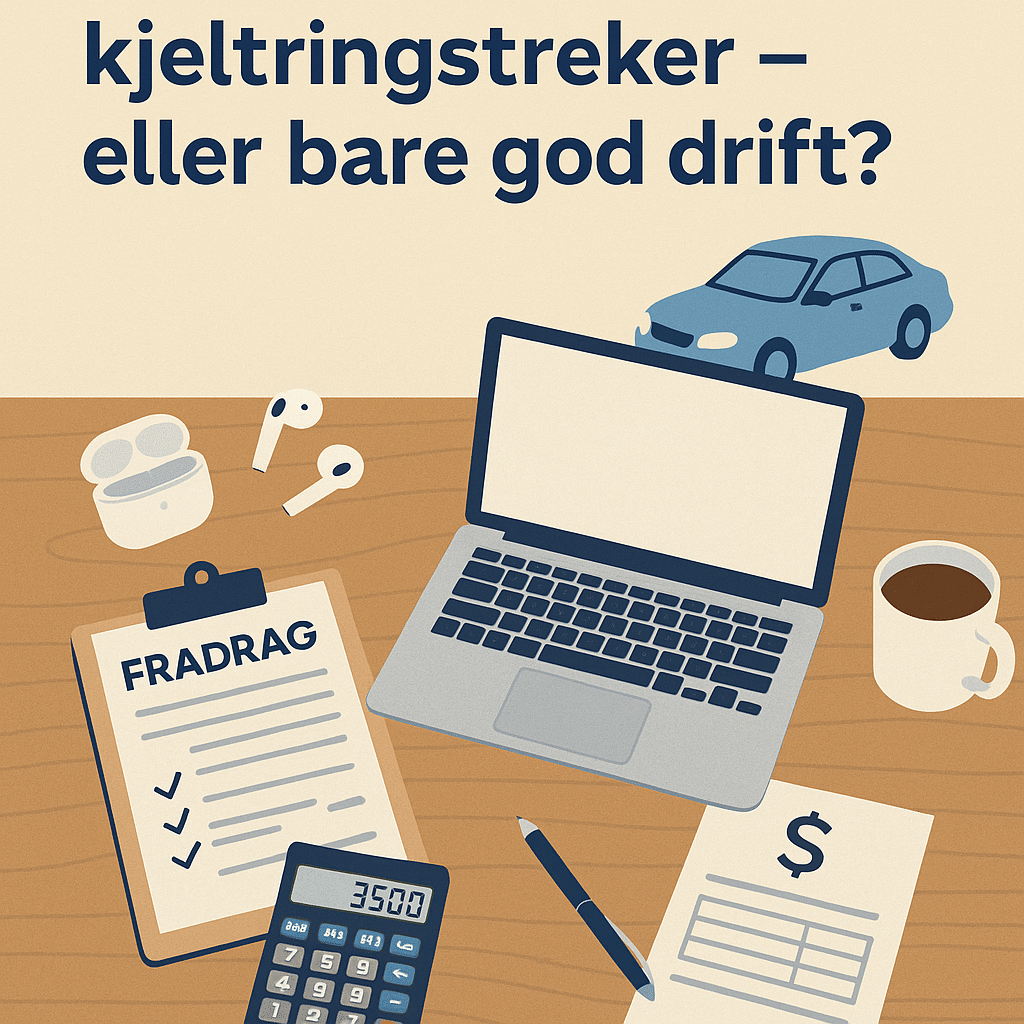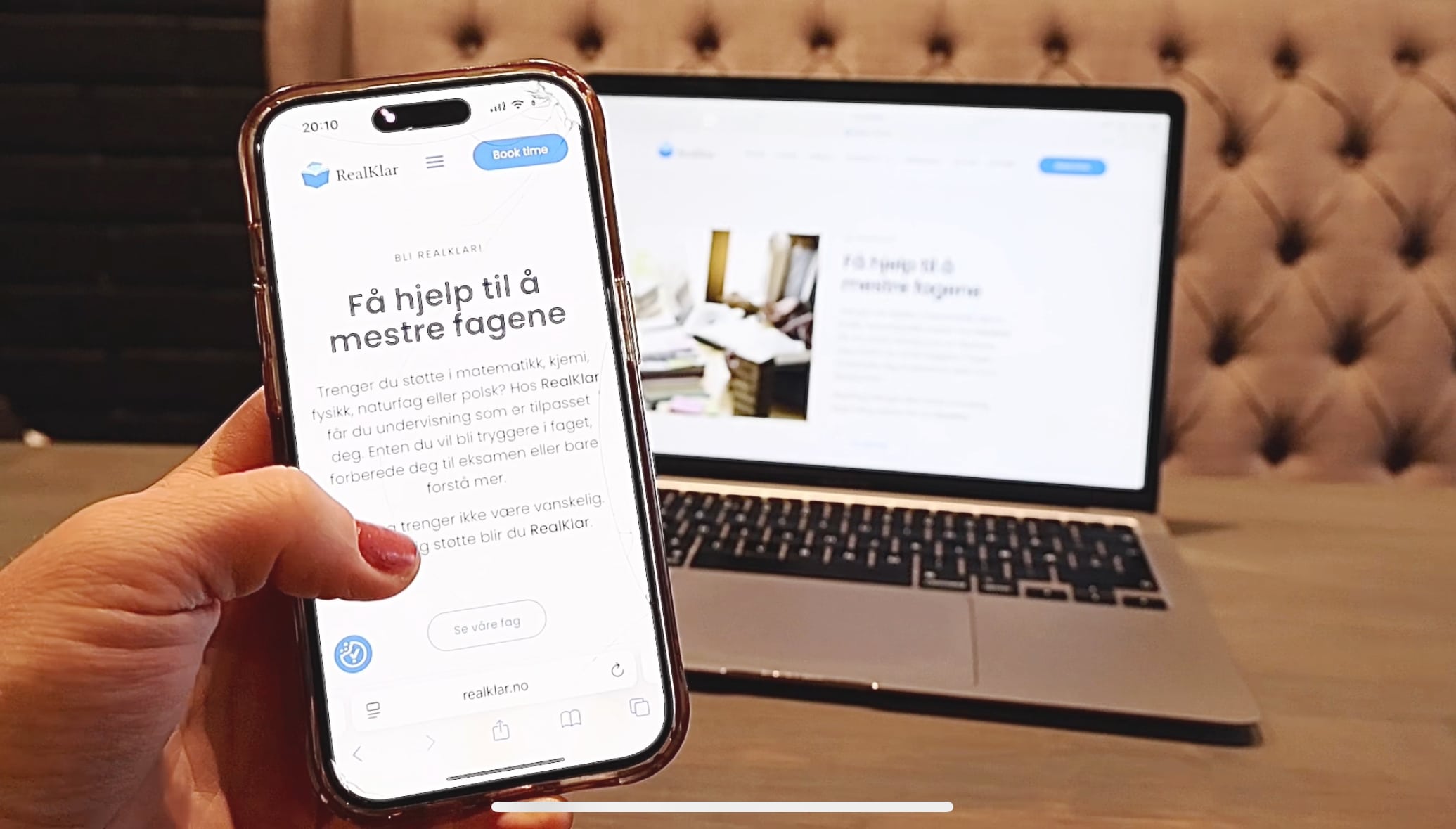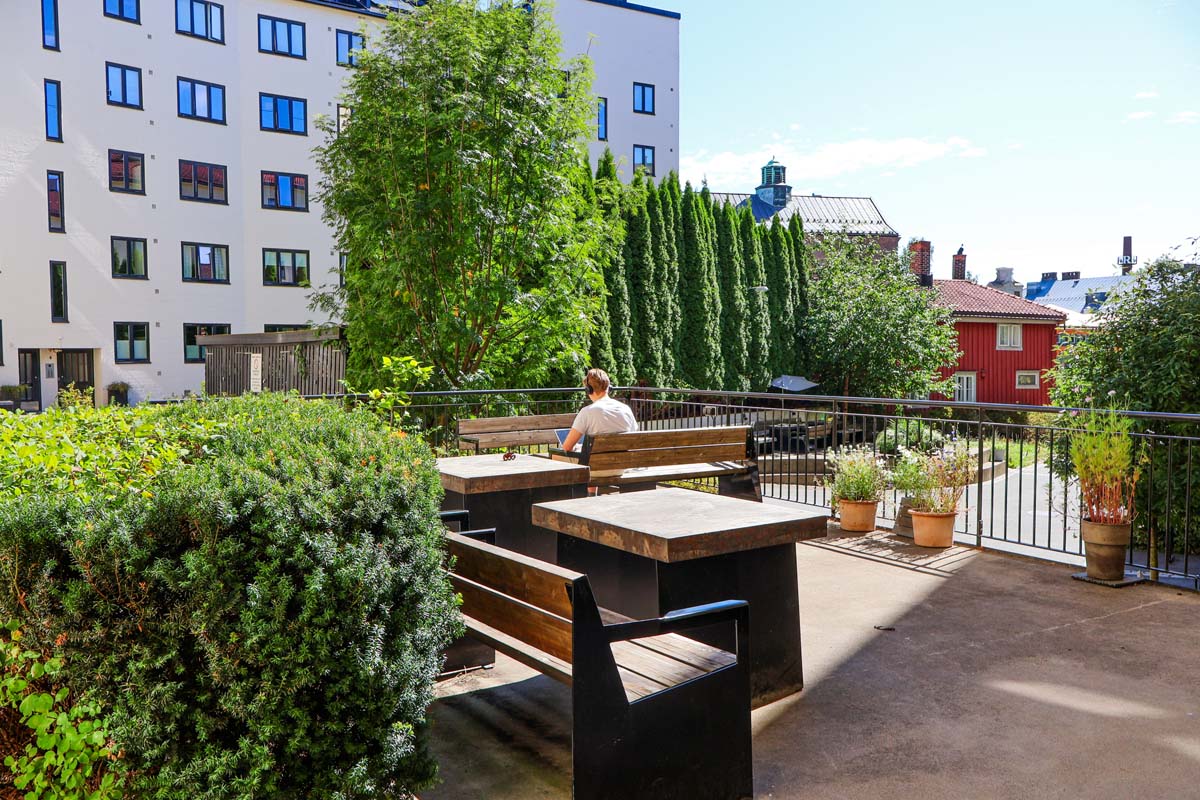Many small business owners and self-employed people think they're “playing dirty” if they bring AirPods, a home office or a car to work. In reality, this is completely normal - and actually intended by the legislator. Here's what's actually allowed, and how to use the system correctly - with concrete examples in dollars and cents.
The tax system is designed to help - not suspect
The Norwegian tax system is built on trust and reality: You should pay tax on what you actually earn, not by the money you have to spend to earn them. Therefore, traders are allowed to deduct expenses that are necessary for their operations.
That doesn't mean you should be “creative” - but you shouldn't be afraid to use the system as it was intended.
As the Tax Administration itself writes:
“Costs incurred to acquire, maintain or secure income may be deducted.”
In other words - everything that has a real connection to your business can be deductible.
Example 1: Home office - from 2,128 to 15,000 kroner in deductions
Many people do a lot of their work at home - meetings, planning, record keeping, accounting and customer contact. Then you can get a deduction for home office.
You have two choices:
- Standard deduction:
You enter a fixed amount on SEK 2,128 per year (2024). No documentation required. - Real deduction:
You calculate actual costs based on the proportion of the home that is used for work.
If you have a 10 m² office in a 100 m² home, you can charge 10 % of rent, electricity, insurance and municipal fees.
Example:- Rent: NOK 150,000 per year
- 10 % of this = SEK 15,000 in deductions
For limited liability companies it is also allowed to Rent an office in your own home, but then you have to write a real lease contract.
Typical market rent for a small residential office is around SEK 1,000-2,000 per month. The company gets a deduction, while you as a private individual must enter the rental income - often tax-free if it is less than NOK 10,000 a year.
Example 2: Car and driving - SEK 3.50 per kilometer
If you have a sole proprietorship and use your own car for customer visits, you can drive mileage allowance of NOK 3.50 per km (rate 2024).
If you drive 5,000 km to customers a year, you get a deduction of:
5,000 × 3.50 = NOK 17,500.
Use a logbook or app to document date, customer and purpose.
If you exceed 6,000 km per year in business, the car is considered to be commercial vehicle - then you can enter all costs (fuel, insurance, service), but must be taxed for private use.
Example 3: AirPods, phone and equipment
You use your phone and headphones for patient contact, customer meetings or invoicing.
A set of AirPods for 3,000 kroner can be recognized as an operating expense if they are used in the business.
If they are also used privately, you should keep 50 % of the cost, i.e. 1,500 kroner as a deduction.
The same principle applies to PCs, tablets, mobiles and software such as Teams, OneDrive and accounting systems.
Example 4: Clothing, shoes and training - where the line is drawn
A physiotherapist or trainer cannot wear regular sneakers or workout clothes, even if they are used for work.
Men workwear with logo or clothing that is not suitable for private use (clinical uniform, protective equipment) is deductible.
A play coat for 600 kroner - Yes.
Nike sneakers for 1,200 kroner - No.
Example 5: VAT - the difference between industries
Here, it mostly distinguishes between industries.
- A consultant or electrician who are VAT-registered will get back 25 % VAT on all purchases.
AirPods at SEK 3,000 = SEK 2,400 real cost. - A physiotherapist with VAT exemption do not get back VAT.
Same AirPods = SEK 3,000 cost.
VAT deduction only applies to businesses that themselves invoice with VAT.
For healthcare, education and finance, the services are exempt and the VAT amount becomes part of the cost.
Common limit values you should be aware of
| Type of deduction | Rate / limit (2024) | Documentation requirements |
|---|---|---|
| Home office standard | 2,128 SEK/year | none |
| Real home office | Share of costs | Must only be used for work |
| Mileage allowance | NOK 3.50/km (up to 6,000 km) | Driver's manual |
| AirPods, headset | Actual cost, part private/work | Invoice, purpose |
| Company ownership of office in residential property (AS) | NOK 1,000-2,000/month normal market rent | Lease contract |
| PC, mobile, license | Actual cost | Receipt and use |
A system built on trust
Many Norwegians are reluctant to make deductions - for fear of making mistakes.
But the system is designed to be fair, not to punish.
Where an employee's office, equipment, telephone and car are covered by the employer, the self-employed person must pay everything themselves - and therefore receives a deduction for the costs.
Using the system correctly is not trickery - it's sound business.
The tax authorities themselves emphasize that deductions are a normal part of the business, as long as everything is documented and reasonable.
What not to do
Although the rules are flexible, there are limits.
This is accepted not:
- To carry clothes that are used privately.
- Renting out a room that is actually used as a bedroom.
- Keeping car expenses without a logbook.
- Buying holiday equipment and calling it a «business investment».
Such things are classic errors that can lead to retroactive calculation - and possibly additional tax.
Conclusion: This is the norm
Charging necessary expenses to the company is not “cheating the government” - it's using the system as intended.
The deduction rules mean that small businesses can compete on equal terms with larger companies, and that you as a self-employed person don't pay tax on the expenses you incur to do your job.
As long as you can document, explain and account for its use - it's perfectly legal.
Sources:
The Swedish Tax Agency, Accounting Norway, Tripletex, DNB News, Law data




